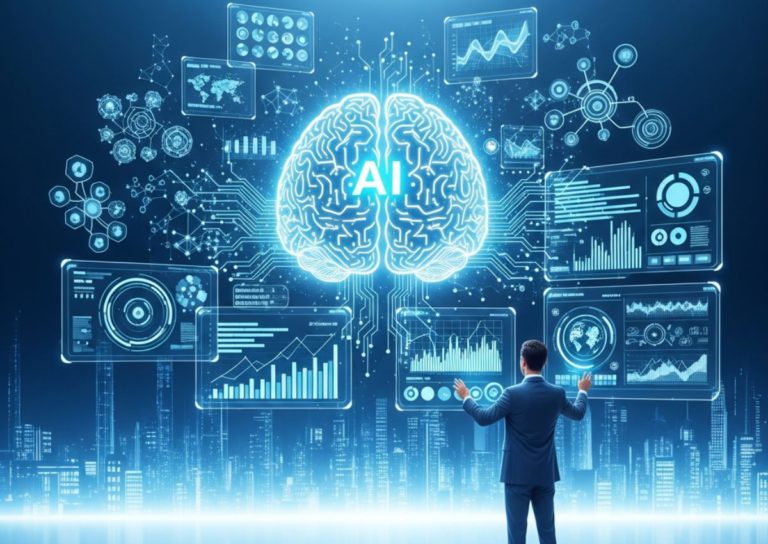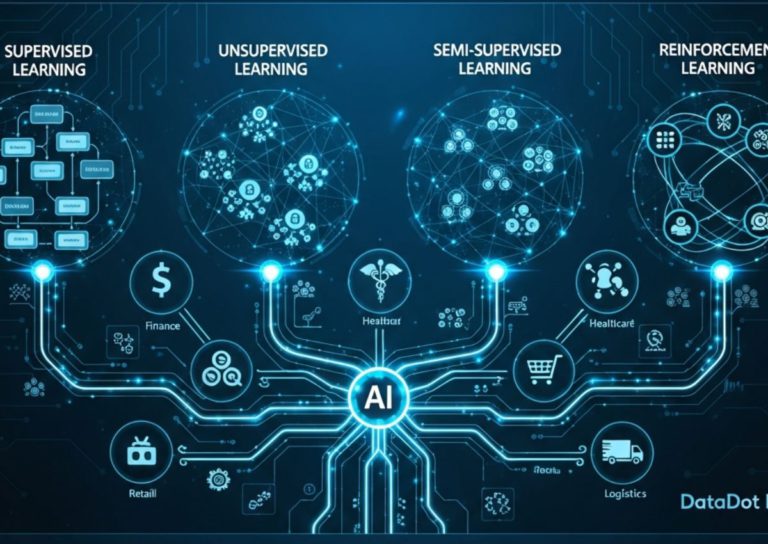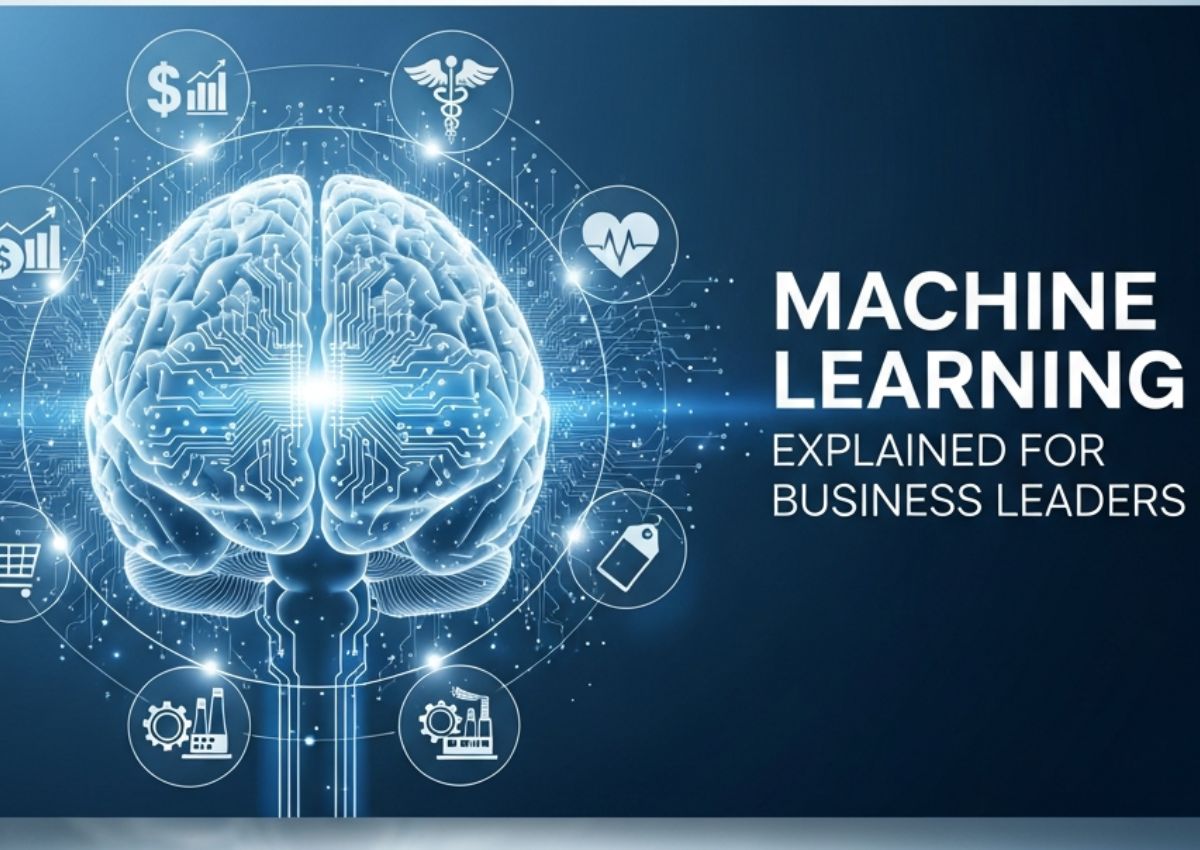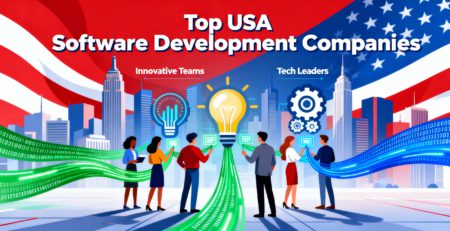Machine Learning Explained for Business Leaders
DSSP2025-11-09T12:30:12+00:00What Is Machine Learning?
Machine Learning (ML) is a branch of artificial intelligence (AI) that enables systems to learn and ameliorate automatically from experience without being explicitly programmed. In simpler terms, it allows computers to dissect large quantities of data, identify patterns, and make intelligent prognostications or opinions grounded on that information.
For business leaders, machine literacy is further than just a tech buzzword; it’s an important tool for driving smarter decision- timber, perfecting effectiveness, and gaining a competitive edge in moment’s data- driven business.
In diligence ranging from finance and healthcare to retail and logistics, machine literacy is transubstantiating how companies operate, helping them cast trends, epitomize client tests , detect fraud, and optimize force chains.
Why Machine Learning Matters for Business Leaders :
We live in the age of data. Every alternate, associations induce massive quantities of information from deals, detectors, client relations, and online geste .
The challenge? Making sense of it all. That’s where machine literacy comes in. It automates data analysis, revealing practicable perceptivity that would be insolvable to uncover manually.
For example:
- Retailers use ML to prognosticate demand, epitomize offers, and manage force.
- Banks emplace it to descry suspicious deals and credit pitfalls.
- Healthcare associations use it to identify complaint patterns and enhance patient care.
- Manufacturers work it for prophetic conservation and quality control.
According to McKinsey, companies that integrate ML into their operations can increase gains by over to 20, ameliorate client satisfaction, and make opinions five times faster. For leaders, understanding the fundamentals of machine literacy is n’t about rendering, it’s about knowing how and where to apply it for business advantage.
How Machine Learning Works :
Machine literacy works by feeding large volumes of data into algorithms that can identify connections, descry trends, and make prognostications. Let’s break this down into a simple 5- step process
Data Collection : Data is the foundation of any machine literacy model. Businesses collect data from colorful sources similar as CRM systems, websites, IoT bias, detectors, or client feedback.
Data Preparation :Before training a model, data must be gutted and organized removing duplicates, correcting crimes, and homogenizing formats.
Model Training :The ML algorithm “ learns ” by assaying literal data. During training, it identifies patterns and builds a fine model to represent those patterns.
Testing and confirmation :Once trained, the model is tested with new data to estimate how directly it makes prognostications. adaptations are made until it performs reliably.
Deployment :Eventually, the trained model is stationed into real- world business systems where it can continuously dissect data, make prognostications, and ameliorate over time.
In substance, ML systems get smarter the further data they reuse. For business leaders, this means scalability and nonstop enhancement across operations.

Types of Machine Learning :
Understanding the main types of machine literacy helps leaders identify which approach stylish suits their business needs
Supervised Learning :
How it works The model is trained on labeled data( data with known issues).
illustration : A bank’s algorithm learns from literal loan data to prognosticate the liability of dereliction.
Use cases : Credit scoring, fraud discovery, demand soothsaying.
Unsupervised literacy :
How it works The model finds patterns in unlabeled data no predefined answers live.
illustration : A retailer uses unsupervised literacy to member guests grounded on buying geste.
Use cases : client segmentation, anomaly discovery, recommendation systems.
Semi-Supervised Learning :
How it works A cold-blooded approach using a small quantum of labeled data with a large quantum of unlabeled data.
Use cases: Web content bracket, speech recognition.
Underpinning Learning :
How it works The model learns through trial and error, entering feedback grounded on its conduct.
Example Self- learning robots or algorithms optimizing logistics routes.
Use cases : Reuse robotization, dynamic pricing, resource allocation.
Benefits of Machine literacy in Business :
Machine literacy delivers a range of strategic advantages across diligence. Then are the most significant benefits business leaders should fete
Data- Driven Decision- Making :
ML helps businesses move beyond suspicion. Leaders can make informed opinions grounded on accurate, data- backed prognostications.
Bettered effectiveness and Cost Savings :
Robotization through ML reduces homemade work and streamlines complex processes saving time and functional costs.
Personalization at Scale :
ML algorithms dissect client geste to deliver substantiated marketing, recommendations, and pricing strategies, enhancing satisfaction and retention.
Risk Management and Fraud Detection :
In finance and insurance, ML models descry unusual patterns that indicate fraud or implicit threat briskly and more directly than mortal judges.
Prophetic perceptivity :
Businesses can anticipate unborn trends, demand changes, and implicit dislocations, enabling visionary strategies.
Nonstop enhancement :
ML models evolve with data. The further they process, the more accurate and precious their prognostications come.
Competitive Advantage :
Early adopters of ML gain significant request advantage through invention, dexterity, and bettered client gests .
Machine Learning Use Cases Across Industries :
Let’s look at how machine literacy is revolutionizing business operations in crucial sectors
- Retail andE-commerce :
- Product recommendations( Amazon, Netflix- style)
- Dynamic pricing grounded on demand and competition
- force optimization and demand soothsaying
- Finance and Banking :
- Fraud discovery and threat scoring
- Algorithmic trading and investment perceptivity
- Credit decision robotization
- Healthcare :
- Prophetic opinion and treatment planning
- medicine discovery acceleration
- individualized case care through data analytics
- Manufacturing :
- Predictive conservation of outfit
- disfigurement discovery using computer vision
- force chain optimization
- Marketing and Advertising :
- Targeted announcement juggernauts using client segmentation
- Sentiment analysis for brand character
- Automated content personalization
- Logistics and Supply Chain :
- Route optimization for delivery
- Real- time force operation
- Demand vaticination to avoid overstocking
- Human coffers :
- Resume webbing and seeker matching
- Hand retention vaticination
- Performance shadowing and pool planning
Challenges in espousing Machine Learning :
Despite its eventuality, numerous associations struggle to apply ML successfully. Common challenges include
- Lack of Skilled Talent : Machine learning moxie is still in high demand but short force. Erecting an internal data wisdom platoon can be expensive and time- consuming.
- Data Quality Issues : Poor, deficient, or prejudiced data can lead to inaccurate prognostications. Data sanctification and governance are critical.
- High perpetration Costs : Developing ML models requires calculating power, pall structure, and storehouse which may strain lower budgets.
- Integration with Legacy Systems : Aged IT systems frequently warrant comity with ultramodern ML tools. Integration can bear significant specialized work.
- Ethical and sequestration enterprises :Using client data for prognostications raises sequestration and bias enterprises. Leaders must insure compliance with GDPR and AI ethics guidelines.
- Change Management : Espousing ML frequently requires artistic and workflow changes. Leadership buy- in and proper hand training are essential.
Way for Business Leaders to Implement Machine Learning Successfully :
For leaders looking to influence machine literacy effectively, then’s a step- by- step roadmap.Define Clear Business objects Do n’t start with the technology, start with the problem. Identify specific business areas where ML can add measurable value.
Make a Data Strategy : Establish a strong foundation with dependable, well- organized data. Invest in data cleaning, integration, and governance.
Start Small : Begin with airman systems that have quick triumphs for illustration, automating a small part of client support or prognosticating force requirements.
Choose the Right Tools : Use pall- grounded ML platforms like AWS SageMaker, Google Cloud AI, or Microsoft Azure ML to reduce setup time and cost.
Unite Across brigades :Bring together business leaders, IT, and data scientists. Success depends oncross-functional understanding and alignment.
Ensure translucency and Ethics : Borrow responsible AI practices insure fairness, explainability, and compliance in all ML models.
Measure and Optimize : Track performance through KPIs similar as delicacy, ROI, client satisfaction, and effectiveness earnings. Use results to upgrade your strategy.

How to Measure the ROI of Machine Learning :
To estimate the business value of ML enterprise, leaders should concentrate on crucial performance pointers similar as
functional Cost Reduction Savings from robotization and effectiveness. Profit Growth Increase in deals through personalization and targeted marketing.
- Process Speed Reduction in time to complete repetitious tasks.
- client Retention Improved fidelity from substantiated gests .
- Error Reduction Lower rate of mortal crimes in decision- timber.
- Innovation Index Number of new data- driven enterprise launched.
Consistent measurement helps ensure that ML projects align with business outcomes and continue to deliver value over time.
The Future of Machine literacy in Business :
The coming period of ML is marked by indeed smarter, more independent systems, a shift known as “ stoked intelligence. “Rather than replacing humans, ML will decrease mortal decision- making by furnishing real- time, data- driven perceptivity.
Arising Trends to Watch
- AutoML Tools that automate the creation and optimization of machine literacy models, standardizing access fornon-technical druggies.
- Edge AI Machine literacy stationed directly on bias, enabling briskly, decentralized processing.
- Generative AI Models that can produce new content from marketing dupe to product designs grounded on learned data.
- resolvable AI( XAI) Greater translucency in ML decision- timber, erecting trust and compliance.
- Hyperautomation Integrating ML with robotic process robotization( RPA) to automate entire end- to- end business workflows.
The communication is clear associations that embrace machine literacy now will be the leaders of hereafter’s digital frugality.
Conclusion
In conclusion, Machine Learning is no longer an experimental technology it’s a practical business driver that enhances efficiency, innovation, and decision-making. For leaders, it represents the key to turning data into insight and insight into growth. By starting with small, strategic implementations and scaling responsibly, organizations can harness ML to gain a lasting competitive advantage.
At DataDot Labs, we help enterprises integrate intelligent solutions that align with business goals and accelerate digital success.














